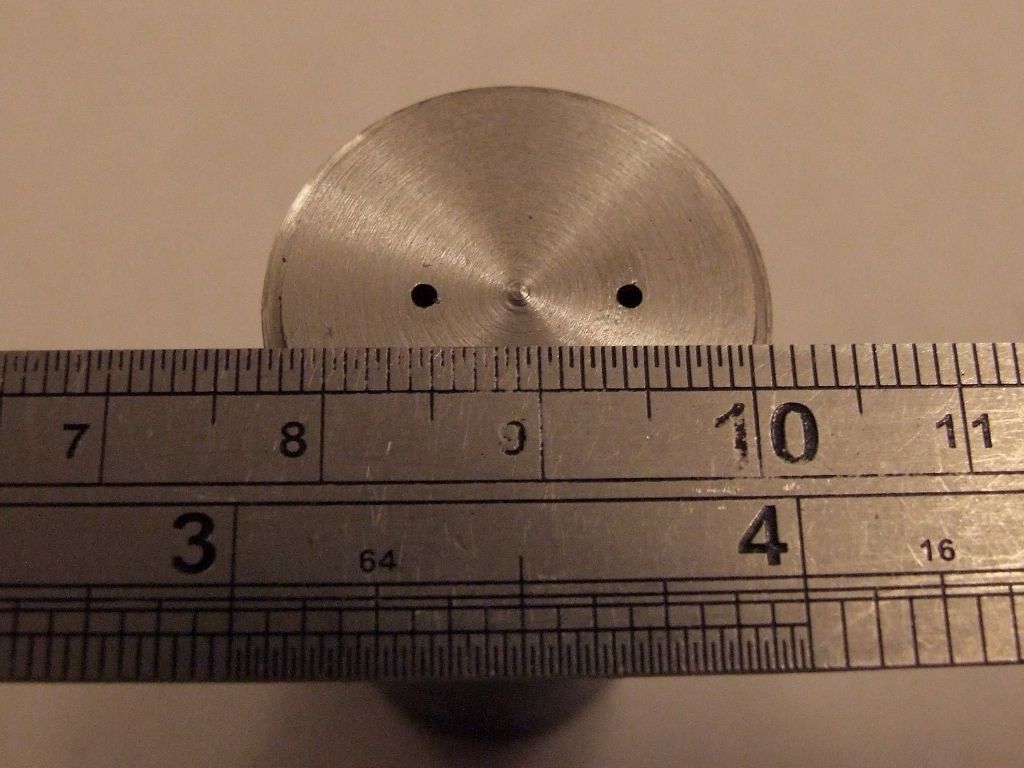My tungsten alloy bar arrived last Thursday:

I've had a go at machining it this evening. It machines very well, no issues with facing and turning. The finish looks a little rough, but I was using a 0.2mm radius insert at 0.1mm/rev. So no doubt I could improve on the finish:

I measured the surface roughness at six points around the circumference; the average was 2.09µm Ra. Surprisingly that's comparable to what I achieve on other metals so not bad.
Sadly drilling and tapping proved to be more problematic. I managed to get a M6 tapped hole produced, but it wasn't easy. Once I'd started a hole using a carbide slotdrill (removing the broken HSS drill in the process) HSS drills opened up the hole without a problem. Tapping proved difficult, although my M6 taps are far from sharp. More research is needed and I feel a tooling order coming on.
Parting off was simple at 4 thou/rev feed and a conservative 260rpm, giving a good finish:

The centre tab was easily removed by filing.
The next exercise is to use the hydraulic copy unit to produce a hemisphere.
Andrew
duncan webster 1.













